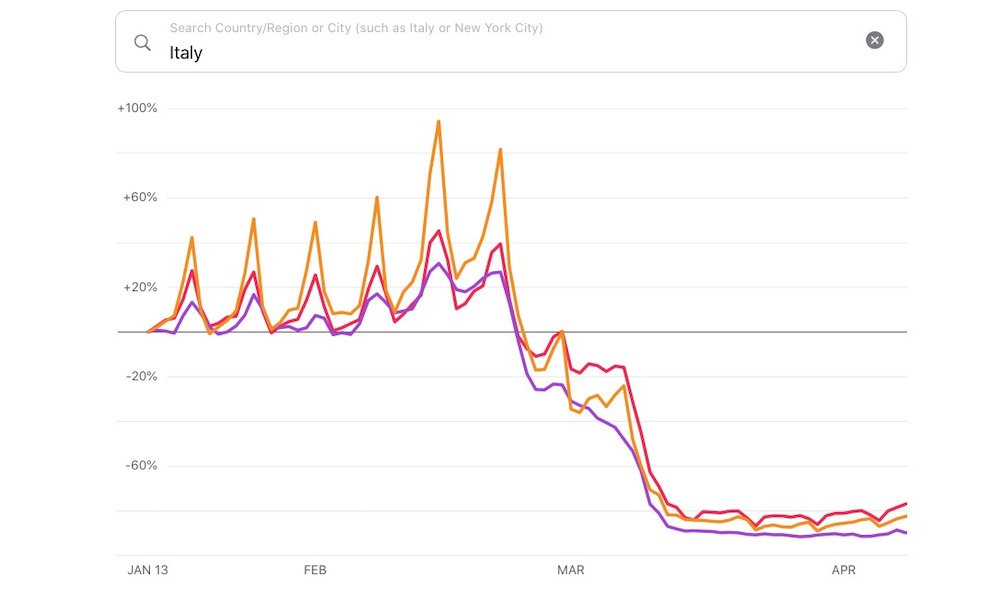Apple’s New Mobility Trends Tool Shows When and Where People Are Staying Home
 Credit: Apple
Credit: Apple
Toggle Dark Mode
Apple on Tuesday published an online tool that allows anyone to view the movement of people during the coronavirus pandemic. This information is pulled from Apple Maps data and is anonymized to show trends instead of individual movement. It’s packaged into a visual tool that shows how people have (or haven’t) changed their travel habits and daily routines during the COVID-19 outbreak.
Published within Apple’s COVID-19 site, the page displays a line graph generated from direction requests from Apple Maps. Instead of displaying the number of individual requests, the chart shows the changes in the number of requests over time. This allows Apple to compare relative movements in different countries during the same period.
The default graph shows the countries of Germany, the USA, the UK, and Italy. There’s a search box at the top that allows you to view the data for a country, region, or even city such as New York City or San Francisco.
These individual graphs show how driving, walking, and even public transportation has decreased over time. Some cities like New York, for example, saw a steep decline at the beginning of March, with driving falling by almost 70 percent, walking by 80 percent, and public transportation by a whopping 89 percent.
Not only can users view a graph of the movement data, but they also can download the data as a CSV file. Apple created the tool and enabled downloads to “provide helpful insights to local governments and health authorities,” especially those that are impacted by the coronavirus pandemic.
The data also may be used to shape public policies “by showing the change in volume of people driving, walking, or taking public transit in their communities.” If people are staying at home, it will be reflected in the graphs. If they are not, the figures will show that too.
These graphs are not to be confused with the collaboration between Apple and Google to track the coronavirus outbreak. This joint effort enables contact tracing via apps, APIs, and Bluetooth. This tracing makes it possible to identify people who have been near someone with COVID-19 when they may have been contagious but still not showing symptoms.






